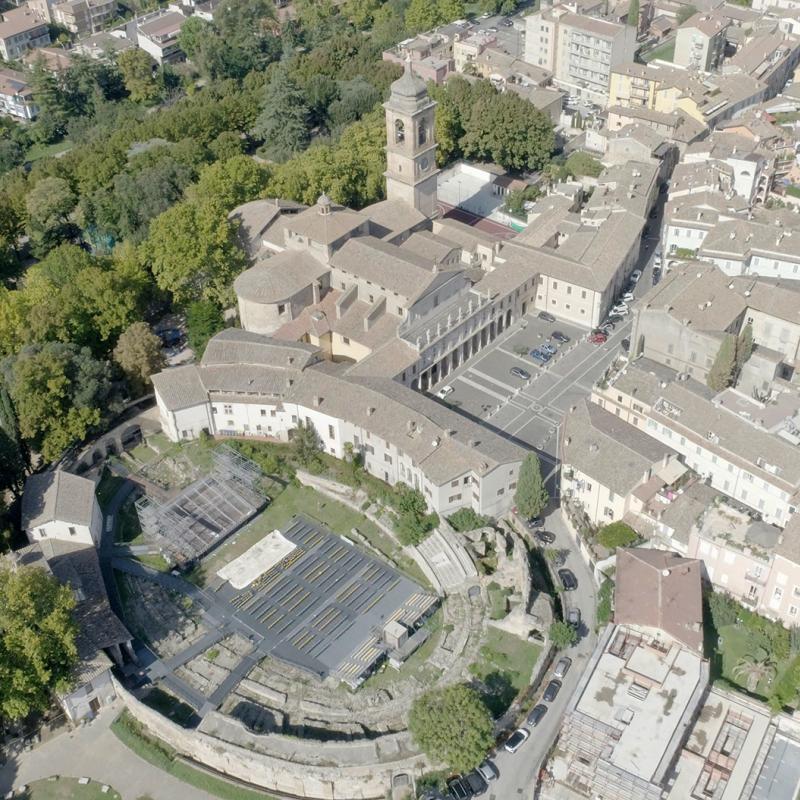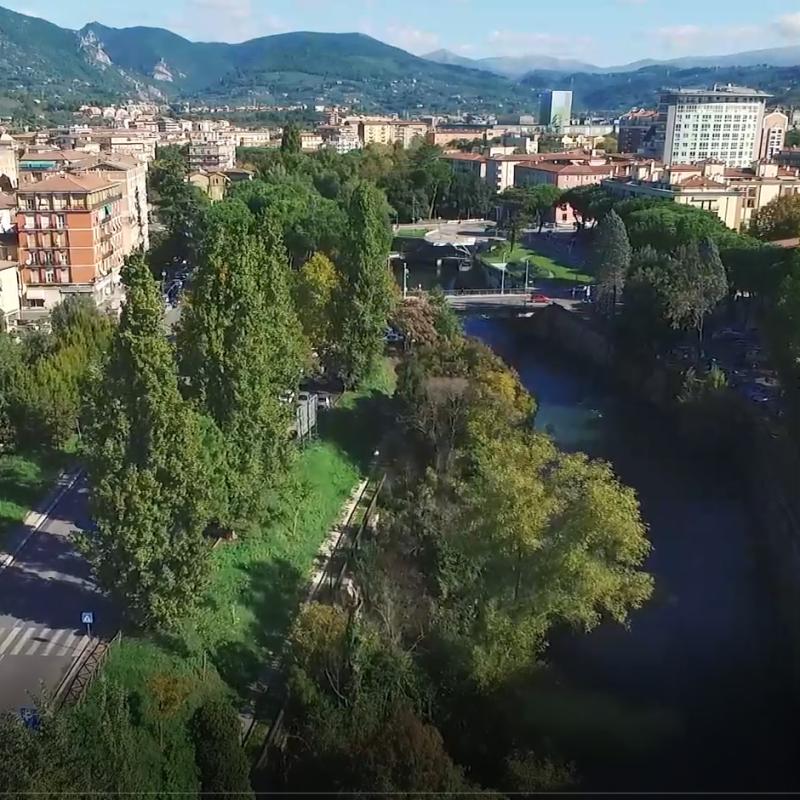Surrounded by green hills, Terni lies in a vast plain at the confluence of the Serra and Nera rivers, hence its ancient name of Interamna Nahars (land between rivers)
Its ancient Roman origins is testified by the remains of the amphitheatre and the ancient walls, which speak of a town of great historical and cultural importance.
But Terni is not only ancient history, it is also a town that played a fundamental role in the Second Industrial Revolution, thanks to its famous Steelworks. Today the remains of these industries have become a true and proper open-air industrial museum, which tells the story of industry and modern and contemporary art.
CAOS – Centro Arti Opificio Siri (Art Centre) – is a large space dedicated to culture, which houses the Sergio Secci Theatre, the Claudia Giontella Archaeological Museum and the Aurelio De Felice Museum of Modern and Contemporary Art. Here one can admire works of art by undisputed masters of the Italian Renaissance, including Piermatteo d’Amelia and Benozzo Gozzoli, as well as the naïf paintings by the painter-shoemaker Orneore Metelli and the precious collection of works by the sculptor Aurelio De Felice.
For keen palaeontologists a visit to Paleolab is a must, a museum which houses an interesting collection of fossils from southern Umbria.
Terni also offers a large variety of urban art, including Arnaldo Pomodoro’s Obelisk, Agapito Miniucchi’s Hyperion and Mark Kostabi’s Eternal Embrace.
But nature is the true protagonist of this town, with the spectacular Marmore Falls, among the highest in Europe. In the Waterfall Park it is possible to follow fascinating trails to admire the waterfalls from different perspectives and enjoy enchanting views, or practice outdoor sports such rafting, canyoning or kayaking.
For more information: https://turismo.comune.terni.it/



